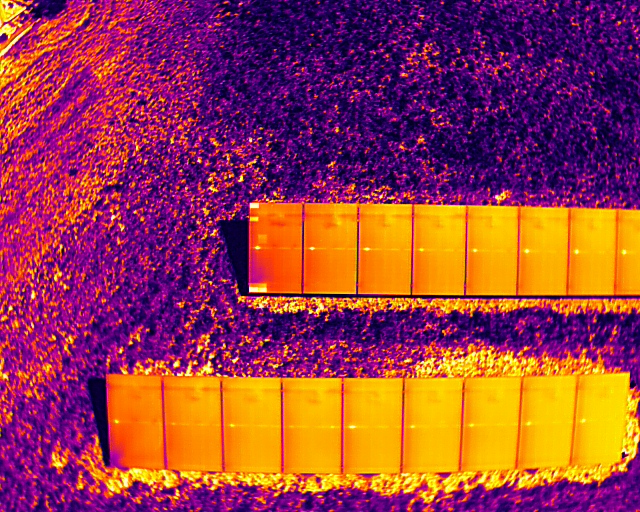Drone Thermal Solar Panel Inspections
Your decision to install photovoltaic (solar) panels was a smart move for energy independence and environmental sustainability. To keep this investment worthwhile, regular inspections are crucial.
Photovoltaic panels are exposed to the elements, so they degrade over time as a result of UV exposure and inclement weather. Industry experts recommend inspecting photovoltaic panels regularly.

Thermal imaging is the preferred method of photovoltaic panel inspection because it can identify subtle differences in temperature across the system, revealing micro-cracks, defective cells, or soiling that reduce your panels’ efficiency.
Our thermal photovoltaic panel inspection service identifies these issues early which can help ensure your system operates effectively and lasts longer.
The Benefits of Thermal Photovoltaic Panel Inspections
Maximize Energy Production
By identifying and rectifying faults early, we ensure your photovoltaic panels produce the maximum amount of energy possible. Even small operational imperfections drastically reduce the efficiency of the unit. Some of the defects that aerial infrared imaging can reveal include:
- Hotspots
- Cracking
- Delamination
- Soiling
- String faults
Cost Savings
One reason why people look to solar energy is for the cost savings.
Thermal photovoltaic panel inspections identify issues early will allow you to fix them, ensuring your solar unit performs properly and saves you money on energy.

Prolong System Life

Regular maintenance and prompt repairs can significantly extend the life of your photovoltaic system.
Catch small operational issues within your system to prolong its life.
The End Product
With our services, you will receive a comprehensive thermographic report highlighting any thermal anomalies that indicate operational deficiencies in your unit.
We strictly adhere to the standards set forth in IEC 62446-1, so you can rest assured that our data is as accurate as possible.
Interested in a quote for your project? Click the button below to drop us a line.
Be sure to check out how aerial thermography can be used for flat roof inspections.
